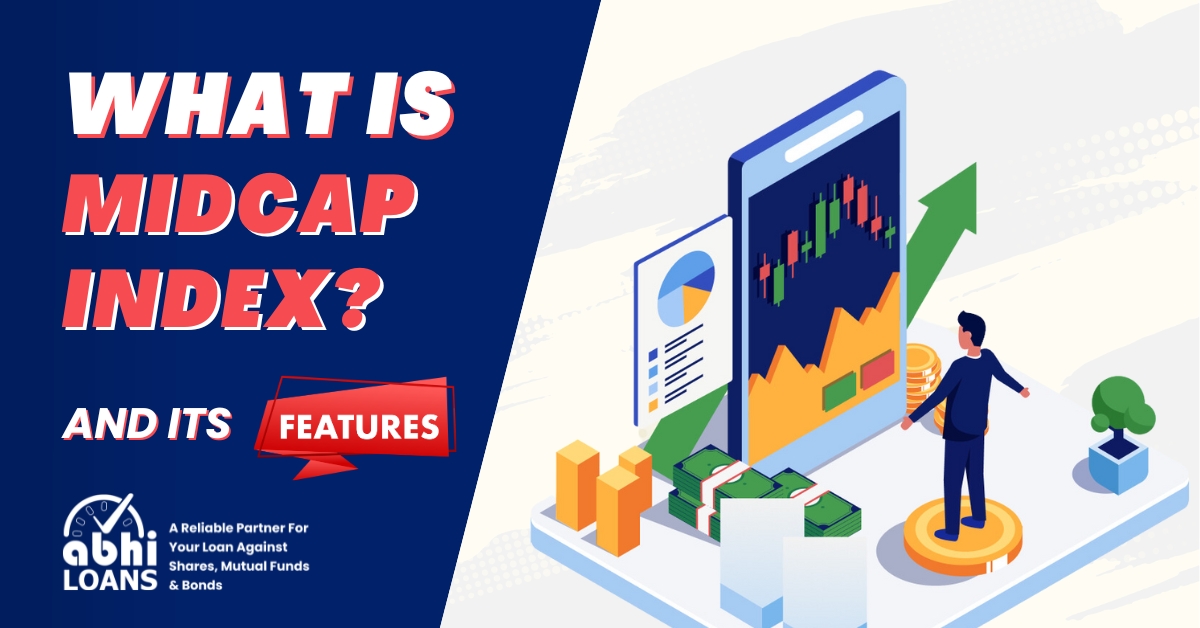What is Midcap Index and its Features?
Investing in the stock market can be a rewarding yet complex endeavor. For those looking to diversify their portfolios and capitalize on the growth potential of mid-sized companies, midcap index funds are a popular choice. Let’s delve into what a midcap index is, its features, and why investors are increasingly turning to it.
What is a Midcap Index?
A midcap index is a stock market index that tracks the performance of medium-sized companies, falling between large-cap and small-cap companies. The term “midcap” is a combination of “middle” and “capitalization,” referring to companies with market capitalizations generally ranging from Rs.5000 crore to Rs.20,000 crore. These indices provide investors with a snapshot of the overall performance of mid-sized companies in the market.
Features of Midcap Index
Diverse Sector Representation:
One of the key features of midcap indices is their diverse sector representation. Unlike some indices that may be heavily tilted towards specific industries, midcap indices often encompass a broad spectrum of sectors. This diversification can be advantageous for investors seeking exposure to various industries and mitigating risks associated with sector-specific downturns.
Growth Potential:
Midcap companies are often in a phase of rapid growth and expansion. This growth potential can translate into higher returns for investors compared to more established large-cap companies. However, it’s important to note that higher potential returns come with increased volatility, making midcap index funds suitable for investors with a higher risk tolerance.
Market Performance Indicator:
Midcap indices are considered reliable indicators of the overall health of the stock market. Since mid-sized companies are sensitive to economic changes, the performance of midcap indices can provide valuable insights into broader market trends. Investors and analysts often use midcap indices as a gauge for market sentiment and economic conditions.
Balanced Risk-Reward Profile:
Midcap index funds offer a balanced risk-reward profile. While they carry more risk than large-cap index funds, they also present the opportunity for greater returns. For investors seeking a middle ground between the stability of large-cap investments and the growth potential of small-cap investments, midcap index funds can be a strategic choice.
Accessible for Individual Investors:
Investing in midcap index funds provides individual investors with an opportunity to access a diversified portfolio of mid-sized companies without the need for extensive research or the challenges associated with direct stock picking. This accessibility makes midcap index funds a popular choice for those looking to invest in the stock market with a hands-off approach.
Why Choose Midcap Index Funds?
Investors opt for midcap index funds for various reasons:
Diversification:
Midcap index funds offer investors exposure to a diverse range of mid-sized companies, spreading risk across different sectors and reducing the impact of poor performance in any single industry.
Growth Potential:
The growth potential of mid-sized companies can lead to higher returns for investors. By investing in midcap index funds, individuals can participate in these companies’ growth without having to select individual stocks.
Managed Risk:
While midcap companies are known for their growth potential, they also come with increased volatility. Midcap index funds help manage this risk by providing broad exposure to multiple companies, helping to mitigate the impact of underperformance in any single stock.
Cost-Effective Investing:
Investing in individual midcap stocks can be time-consuming and costly. Midcap index funds offer a cost-effective way to gain exposure to a basket of mid-sized companies, as they typically have lower expense ratios compared to actively managed funds.
Long-Term Investment Strategy:
Midcap index funds are well-suited for long-term investors who can withstand short-term market fluctuations. By adopting a long-term investment strategy, investors can benefit from the compounding effect and ride out the volatility associated with midcap stocks.
Conclusion
Understanding midcap indices and their features is essential for investors looking to diversify their portfolios and capitalize on the growth potential of mid-sized companies.
Midcap index funds provide a strategic investment option, offering a balanced risk-reward profile and the opportunity to participate in the growth of mid-sized companies.
By considering the features and benefits outlined in this guide, investors can make informed decisions about whether midcap index funds align with their financial goals and risk tolerance.
Frequently Asked Questions (FAQs)
Q-1: Are midcap index funds suitable for all investors?
Midcap index funds are generally suitable for investors with a moderate to high-risk tolerance. While they offer growth potential, the increased volatility may not be suitable for conservative investors.
Q-2: How do midcap index funds differ from large-cap and small-cap funds?
Large-cap funds invest in large, established companies, while small-cap funds focus on smaller, more volatile companies. Midcap index funds fall in between, offering a balance of growth potential and risk.
Q-3: What factors should investors consider before investing in midcap index funds?
Investors should assess their risk tolerance, investment goals, and time horizon before investing in midcap index funds. Additionally, understanding the specific companies and sectors represented in the index is crucial.
Q-4: Can midcap index funds be part of a diversified investment portfolio?
Yes, midcap index funds can play a role in diversifying a portfolio. Including a mix of large-cap, midcap, and small-cap investments can help spread risk and capture different market opportunities.
Q-5: How frequently do midcap indices rebalance?
The frequency of rebalancing varies among different midcap indices. Some may rebalance annually, while others do so more frequently. Investors should be aware of the specific rebalancing practices of the index tracked by their chosen midcap index fund.

